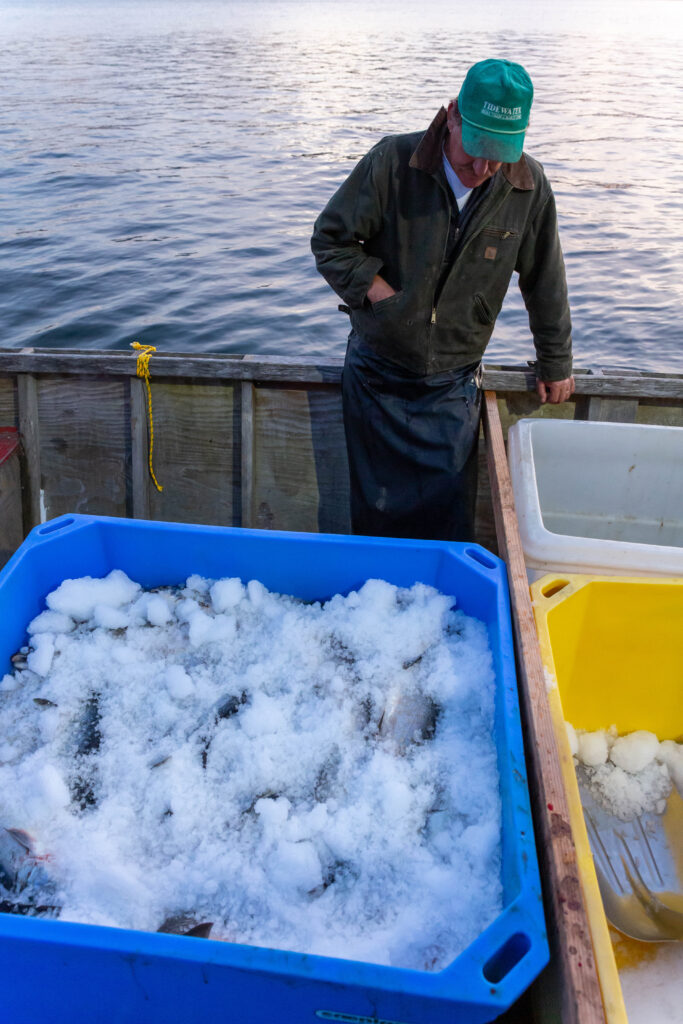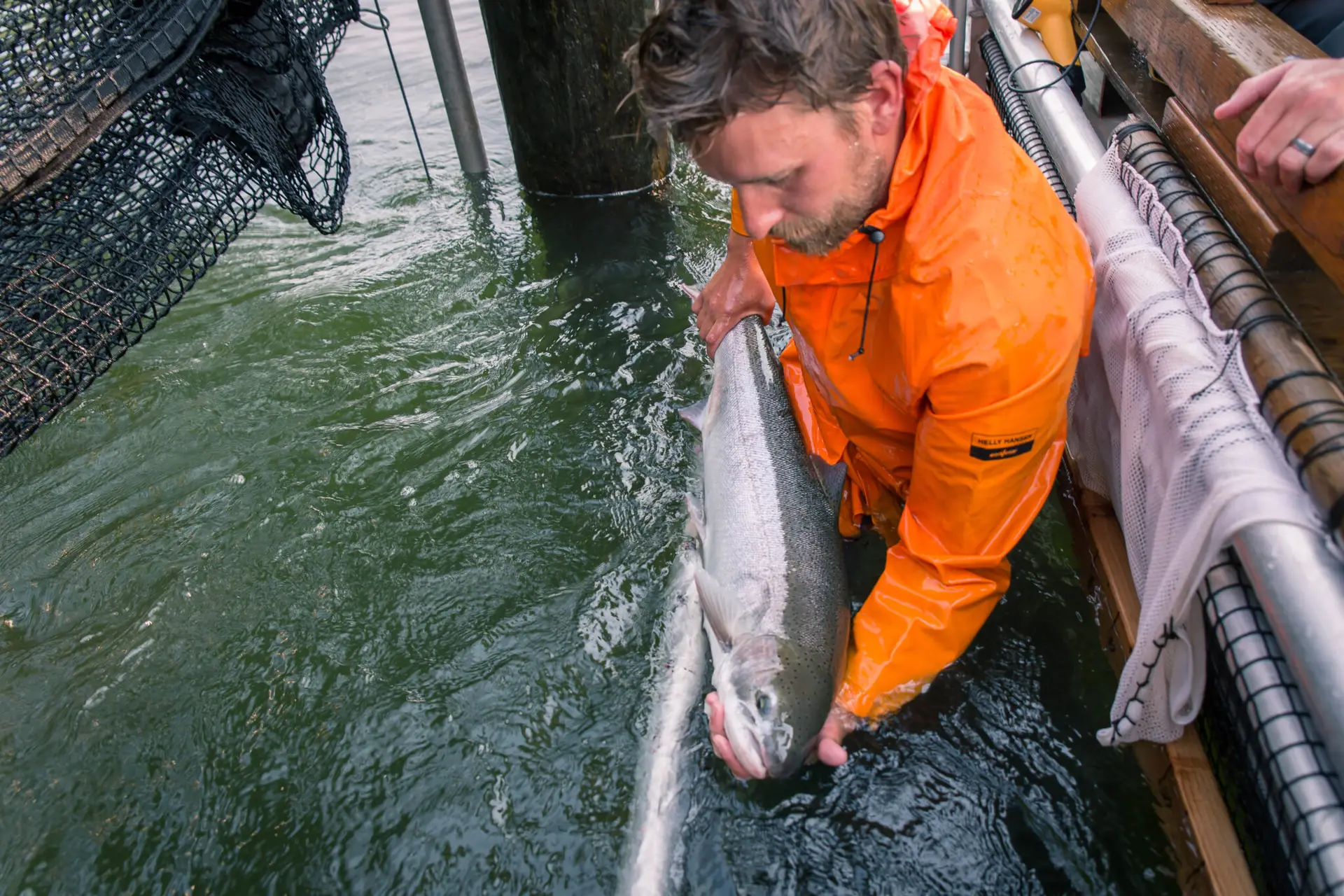
Making history this summer season, local fishers will operate fish traps (otherwise known as pound nets) on both shores of the lower Columbia River in a newly authorized commercial fishery, protecting wild salmon bycatch, addressing genetic threats posed by hatchery production, and providing sustainably caught salmon to consumers of the Pacific Northwest for the first time in 90 years. This historic occasion is the result of a unique and longstanding collaboration between Columbia River commercial fishers and the nonprofit Wild Fish Conservancy that began over a decade ago to identify a sustainable path forward for local fishing economies and the recovery of threatened wild salmon and steelhead.
Revitalizing an Ancient Fishing Technique
Beginning in 2013, local fishers and Wild Fish Conservancy collaborated to install and evaluate the first commercial fish trap in Washington State waters since all fixed-gears were banned in 1934. This passive, live-capture fishing method allows for safe sorting of a fisher’s catch, providing a means to selectively harvest abundant stocks (such as hatchery-origin fishes) while releasing wild salmon and other threatened bycatch species unharmed. Fish traps have various applications for fisheries management, commercial fishers, and conservation. The tool can be used for low-impact research and monitoring, protection of threatened species mixed within fisheries, and/or the selective removal of hatchery produced fish that are known to pose risks to wild salmon populations genetically and ecologically.
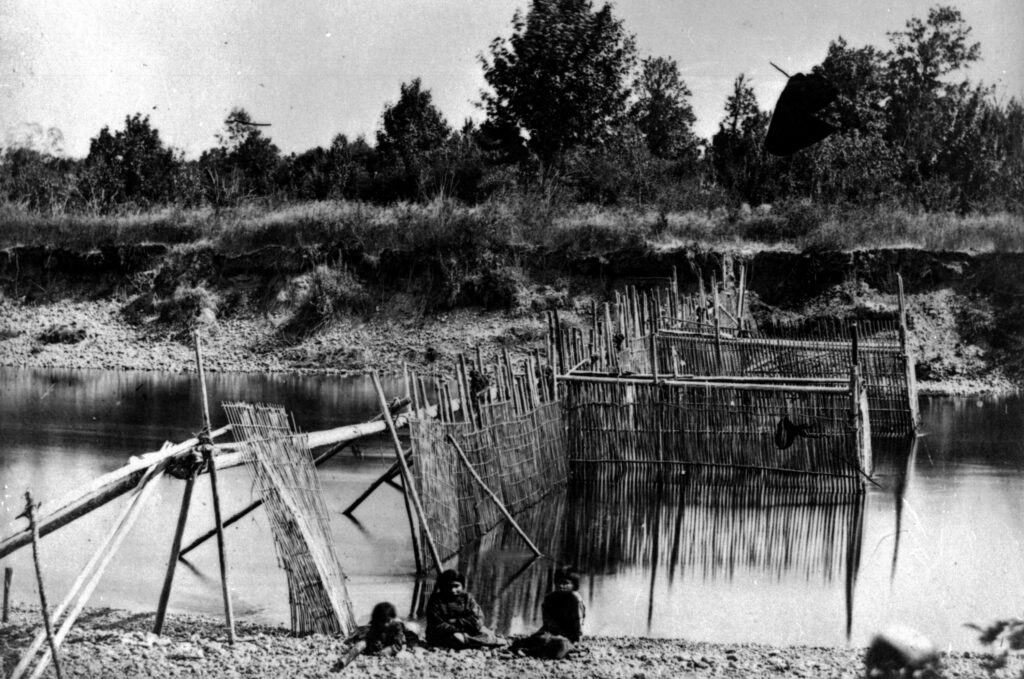
Figure 1. Fish trap at Quamichan Village on the Cowichan River, Vancouver Island, ca 1866.
The fish trap was an historically effective indigenous and commercial gear used in Pacific salmon fisheries, most often in low-gradient rivers and estuaries. Consisting of a series of pilings, stakes, or anchors and attached web fences that extend from the high-water mark to the riverbed, fish traps passively funnel returning adult salmon from the shoreline ‘lead’ (positioned perpendicular to shore) to a maze of walls and compartments. Adult salmonids instinctively swim against the current, entering progressively smaller compartments of a fish trap (e.g., the ‘heart’, ‘pot’, and ‘live well’, respectively). The final compartment has dimensions appropriate for operators to sort the catch for selective harvest or safe release.
In contrast with a gill net, fish remain free-swimming within a fish trap and the nets involved are strategically designed to prevent entanglement. Furthermore, fish can be released with little to no air exposure or human handling. By significantly reducing physical injury and physiological stress relative to conventional fishing practices, fish trapping can allow for low-impact release of bycatch species and dramatically increase the likelihood of survival to the spawning grounds.
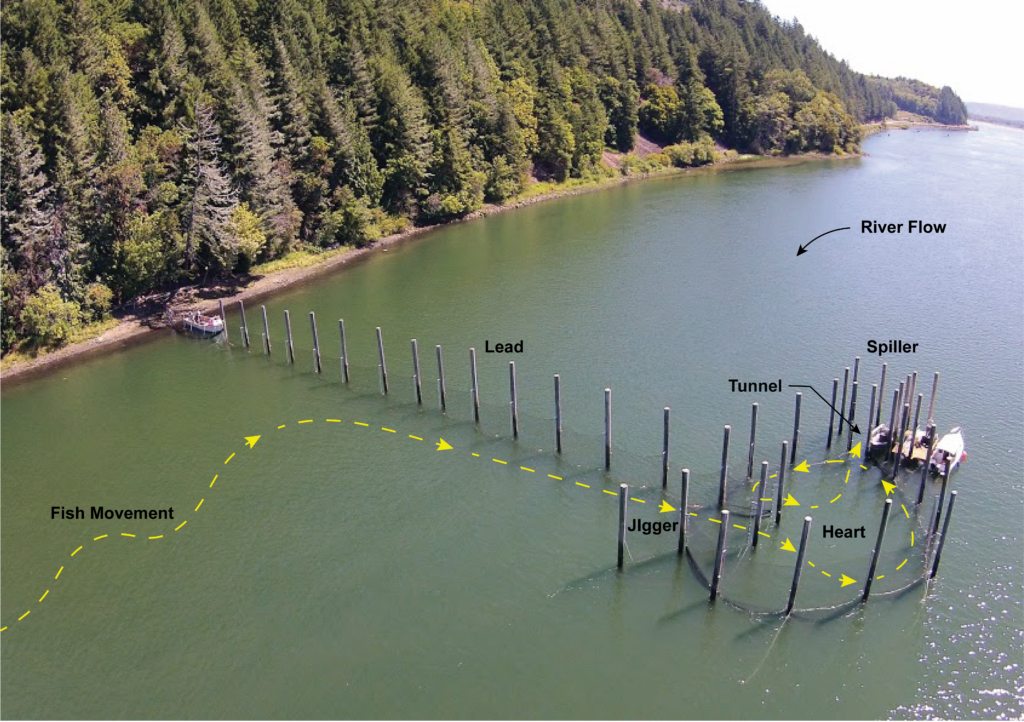
Figure 2. Fish traps passively corral salmon from the lead wall to the heart, spiller (pot), and live well for sorting, selective harvest, or passive release.
The first effort to resurrect fish traps in the Columbia River was initiated in 2013 by commercial fisherman Jon Blair Peterson, in collaboration with volunteers from the nonprofit Wild Fish Conservancy. This project occurred in response to the Endangered Species Act (ESA)-listing of thirteen wild salmon stocks in the Columbia River, severely constrained commercial gill net fisheries, rampant straying of hatchery fish to wild salmon spawning grounds, and various state-adopted fishery and hatchery reform policies between 2009 and 2013. These policies encouraged transition away from gill netting, reduction of wild salmon bycatch mortality in fisheries, and selective removal of hatchery fish to help restore wild salmon and Columbia River commercial fisheries.
Driven in part by his interest in history and passion for the Columbia River salmon fishery, Blair Peterson pushed to install Washington’s first fish trap in generations over a decade-long process with state permitting agencies that begin in the early-2000’s. His initial goal was to install and test the feasibility of a fish trap to improve in-season monitoring of the steelhead run that had been steadily declining and constraining the gill net fishery of the lower Columbia River. Persevering years of paperwork, Peterson finally received permits to install his untreated wood pilings in 2013 for the purpose of research.
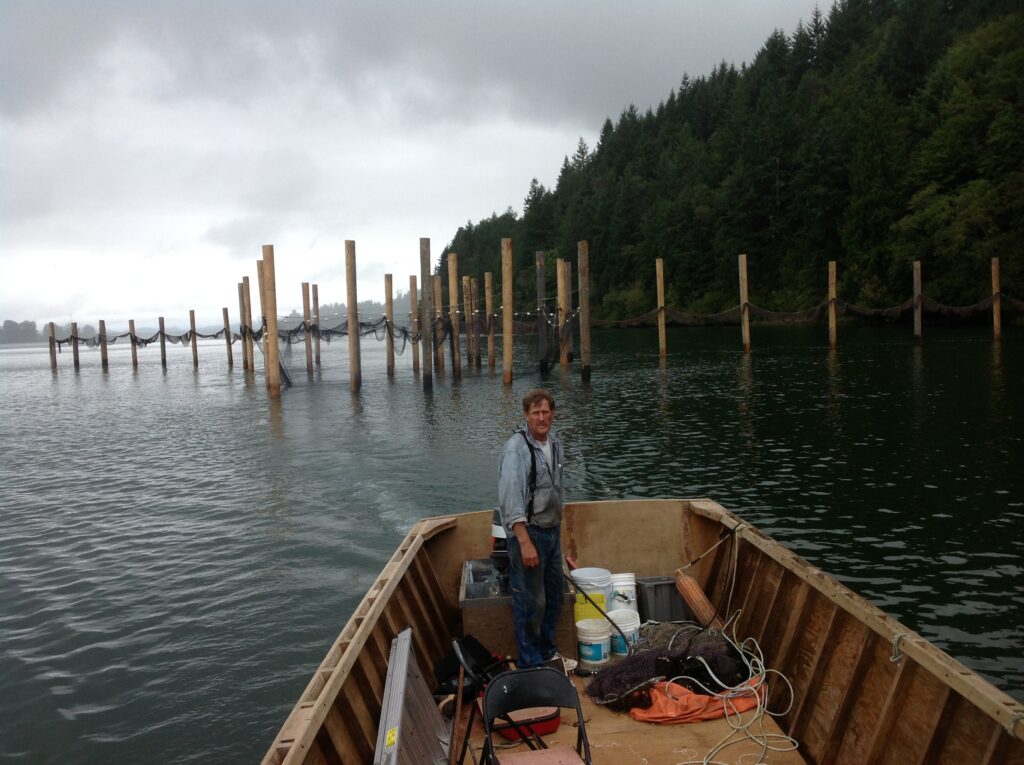
Figure 3. Jon Blair Peterson at the Cathlamet Channel fish trap site in 2013.
Teaming up with Wild Fish Conservancy—who had interest in researching the tool’s potential to protect bycatch in fisheries and address threats from hatchery production—Peterson’s commercial fish trap was deployed successfully for the first time over the fall seasons of 2016 and 2017. Like historical designs common within the lower Columbia River, the fish trap passively corralled returning adult fishes against the current from the lead and heart walls to the pot compartment, from which the free-swimming catch could be brailed to the shallows using a solar powered winch or individually dip-netted to a submerged holding chamber for identification and selective harvest, or passive release. In contrast with gill netting, these methods of capture eliminated entanglement of adult salmonids and dramatically reduced air exposure and handling effects known to contribute to bycatch mortality.
The Research
By 2017, Peterson and Wild Fish Conservancy had established a trapping method that was highly effective at capturing hatchery salmon for selective harvesting. Furthermore, WFC’s research efforts to tag salmon and estimate bycatch survival demonstrated that ESA-listed wild Chinook Salmon and Steelhead could be brailed and released with 99.5% and 94.4% survival post-release, respectively. Survival of Chinook Salmon and Steelhead that were dip-netted and passively released from the pot was further estimated at 100% by the Washington Department of Fish & Wildlife (Cox and Sippel 2020), suggesting that the trap could function to release bycatch completely unharmed if operated in a more passive manner.
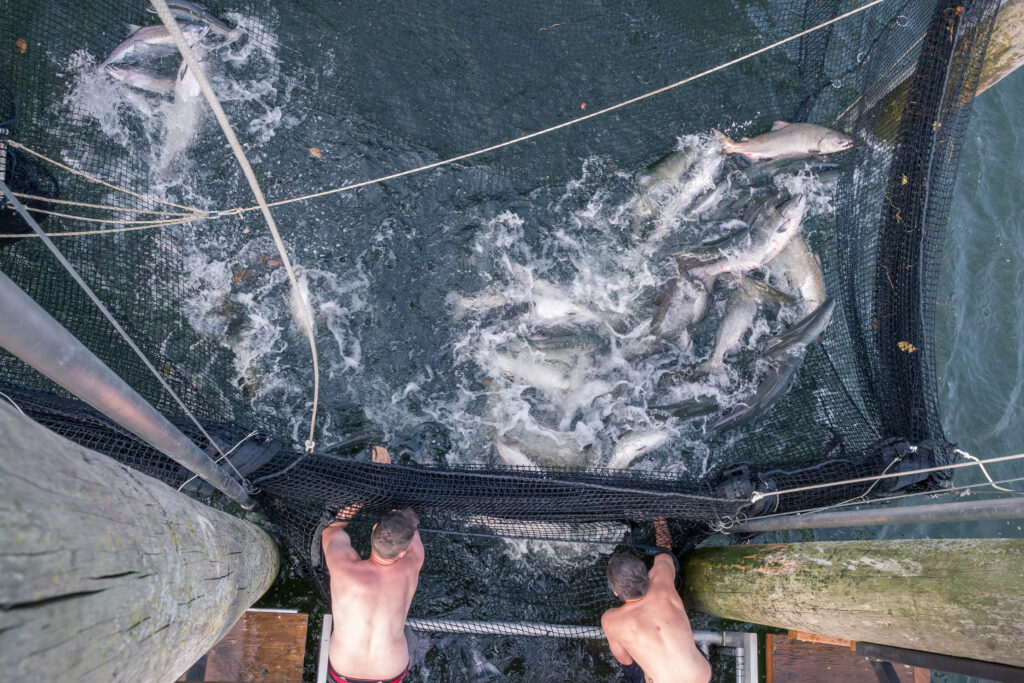
Figure 4. Salmon captured in the pot of a fish trap in 2017.
Although results of these peer-reviewed and published studies demonstrated considerable improvement in bycatch survival rates relative to that of gill nets and other alternative gears, the fish trap gear was further modified and tested between 2019 and 2021 in efforts to potentially eliminate all bycatch mortality effects in the pot of the trap during the final moment of capture. In contrast with the original design, the pot was adjusted to passively funnel fishes one-by-one against the tidal current into a shallow sorting chamber without brailing or necessitating a dip-net (thereby eliminating fish air exposure, handling, overcrowding, and net contact that may affect survival of bycatch post-release). These research efforts proved successful with survival of passively captured and released Sockeye Salmon, Coho Salmon, and Chinook Salmon estimated at 100% post-release from the gear. By 2021, a second fish trap was deployed in the Columbia River by Wild Fish Conservancy and local commercial fishers from Astoria, representing Oregon’s first fish trap in 73 years. It was also the first of its kind to fully employ the new passive capture and release operation to nearly eliminate mortality effects to wild salmon bycatch.
A New Sustainable Commercial Fishery for Wild Salmon Recovery
The Columbia River fish trap studies revived interest in alternative gears, and in April 2021, the Washington Department of Fish and Wildlife officially announced the oncoming legalization of fish traps for selective commercial harvesting in the lower Columbia River. Now, for the first time in decades, commercial fishers will have the opportunity to use alternative fishing gears to the conventional gill net, allowing for live release of wild salmon and selective harvesting of hatchery fishes. In the first year of the fish trap fishery, fishing is expected to occur at three sites in Washington and Oregon between August and October of 2025. Pilings for the Columbia River’s third fish trap site were very recently driven near the Hunting Islands in the lower Columbia River with support from the Washington State Recreation and Conservation Office and the National Oceanic and Atmospheric Administration Bycatch Reduction Engineering Program (BREP).
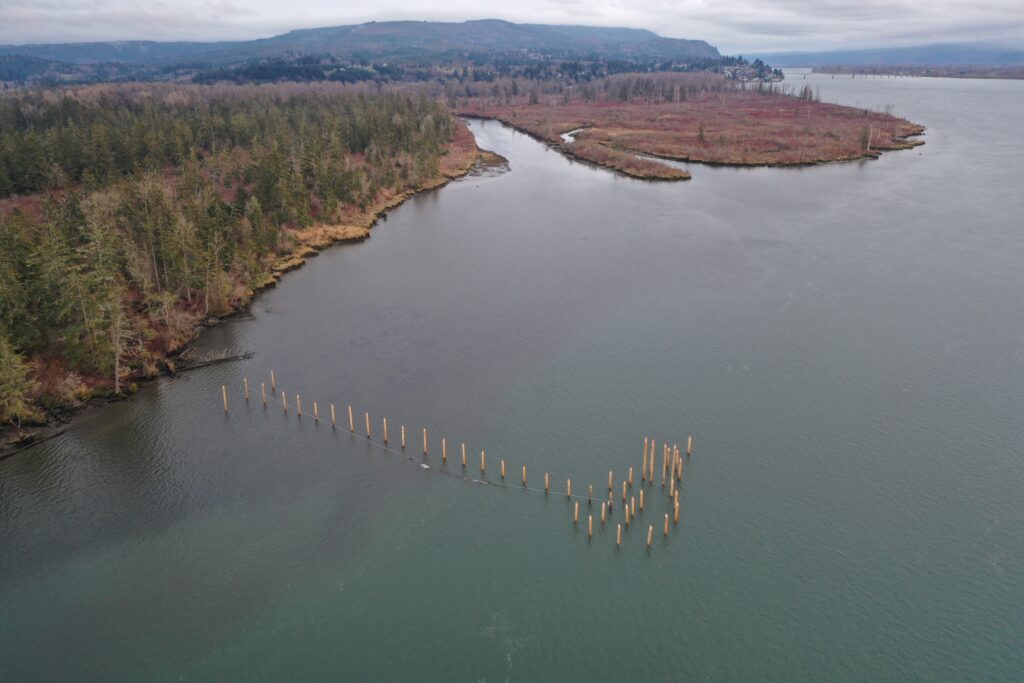
Figure 5. Untreated wood pilings for a fish trap were recently driven offshore of the Hunting Islands. This represents the 3rd fish trap in the lower Columbia River.
With the resurrection of the fish trap fishery in 2025, various benefits are anticipated for wild fish, fishers, and fisheries managers. While helping management agencies address harvest and hatchery factors known to limit recovery of salmon runs, fishers that operate in such a sustainable and a low-impact manner may receive the benefit of fishing more consistently over a longer season, with additional opportunities for ecolabeling certifications that can open doors to high-end markets and increase the prices that fishers receive for landed seafood products. Based upon the conclusions of commercial test fisheries with fish traps that occurred between 2018-2020, there also appear to be significant product quality advantages from the live capture process with little to no fish scale-loss, net damage, bruising of the meat, or damage to egg-skeins. This has already translated to price benefits for test fishers and processors of trap-caught seafood products, and as a reputation for trap-caught fish is further established in the marketplace with additional branding and advertising, it is expected that the price advantages of fish trapping will further increase to the benefit of the fisher and fishing communities.
With implementation of selective fisheries in the Columbia River, it is expected that fish traps will help to selectively remove hatchery produced fish that may otherwise stray to the watershed’s spawning grounds and compromise the fitness of wild salmon populations. Throughout the lower Columbia River tributaries, numerous wild salmon populations are currently subject to severe hatchery straying that exceeds federal limits and likely jeopardizes their survival and recovery (Table 1). Although the Hatchery Science Review Group (HSRG) has stressed that wild salmon conservation objectives cannot be met without reductions in hatchery production, modeling studies have demonstrated that harvest and conservation goals can be met through “an appropriate combination of reduced hatchery production, selective harvest of hatchery fish, and/or selective removal of hatchery adults with tributary traps or weirs.” By striving to achieve federal limits and biological targets set by the HSRG—which are designed to minimize genetic and ecological effects of hatchery production on wild salmon populations—we can protect wild salmon genetic diversity and better allow for rapid adaptation and survival in the face of global climate change.
Table 1. The proportion of hatchery origin spawners (pHOS) exceeds federal biological limits in numerous tributaries of the lower Columbia River. These biological thresholds are designed to protect wild salmon populations from harm. When too many hatchery fish stray to the spawning grounds and federal pHOS limits are exceeded, NOAA Fisheries has determined that wild salmon survival and recovery may be jeopardized.
| Species | Population | pHOS limit | pHOS | pHOS Limit Exceeded? | Years |
| Coho | Grays/Chinook Rivers | 30% | 43% | Yes | 2021-2023 |
| Coho | Elochoman/Skamokawa Rivers | 30% | 26% | No | 2021-2023 |
| Coho | Clatskanie River | 10% | 23% | Yes | 2021-2023 |
| Coho | Scappoose River | 10% | 2% | No | 2021-2023 |
| Coho | Lower Cowlitz River | 30% | 16% | No | 2021-2023 |
| Coho | Coweeman River | 10% | 14% | Yes | 2021-2023 |
| Coho | South Fork Toutle | 10% | 15% | Yes | 2021-2023 |
| Coho | North Fork Toutle | 30% | 16% | No | 2021-2023 |
| Coho | East Fork Lewis | 10% | 11% | Yes | 2021-2023 |
| Coho | Washougal River | 30% | 28% | No | 2021-2023 |
| Coho | Clackamas River | 10% | 3% | No | 2021-2023 |
| Chinook | Grays/Chinook Rivers | 50% | 71% | Yes | 2020-2023 |
| Chinook | Elochoman/Skamokawa Rivers | 50% | 60% | Yes | 2020-2023 |
| Chinook | Mill/Abernathy/Germany Creeks | 50% | 77% | Yes | 2020-2023 |
| Chinook | Coweeman River | 10% | 8% | No | 2020-2023 |
| Chinook | Lower Cowlitz River | 30% | 9% | No | 2020-2023 |
| Chinook | Toutle River | 30% | 31% | Yes | 2020-2023 |
| Chinook | Lewis River | 10% | 42% | Yes | 2020-2023 |
| Chinook | Washougal River | 30% | 22% | No | 2020-2023 |
| Chinook | Kalama River | 10% | 4% | No | 2018-2021 |
| Chinook | Clackamas River | 10% | 3% | No | 2020-2023 |
| Chinook | Youngs Bay | 90% | 85% | No | 2014-2023 |
| Chinook | Big Creek | 90% | 93% | Yes | 2015-2023 |
| Chinook | Clatskanie River | 10% | 94% | Yes | 2012-2023 |
While functioning to help address threats to wild salmon from hatchery production, a transition toward use of selective fish traps will finally allow for the successful release of threatened and endangered wild salmon in commercial fisheries so that they may reach protected and restored spawning grounds. At present, thousands of wild salmon (regardless of their status under the ESA) are harvested annually in conventional mixed-stock gill net fisheries. Through use of fish traps, all wild salmon encountered in commercial fisheries will instead be passively released, allowing the fish to resume the upriver migration and give rise to a new generation of wild fish for population recovery. Although specific wild salmonid populations will benefit more than others based upon rates of encounter with fish traps, it is exceedingly evident that establishment of selective fish trap fisheries will provide enormous benefits to wild Chinook Salmon and Coho Salmon in the Columbia River by dramatically increasing survival, allowing for improved escapement to the spawning grounds, and reducing hatchery-genetic threats.
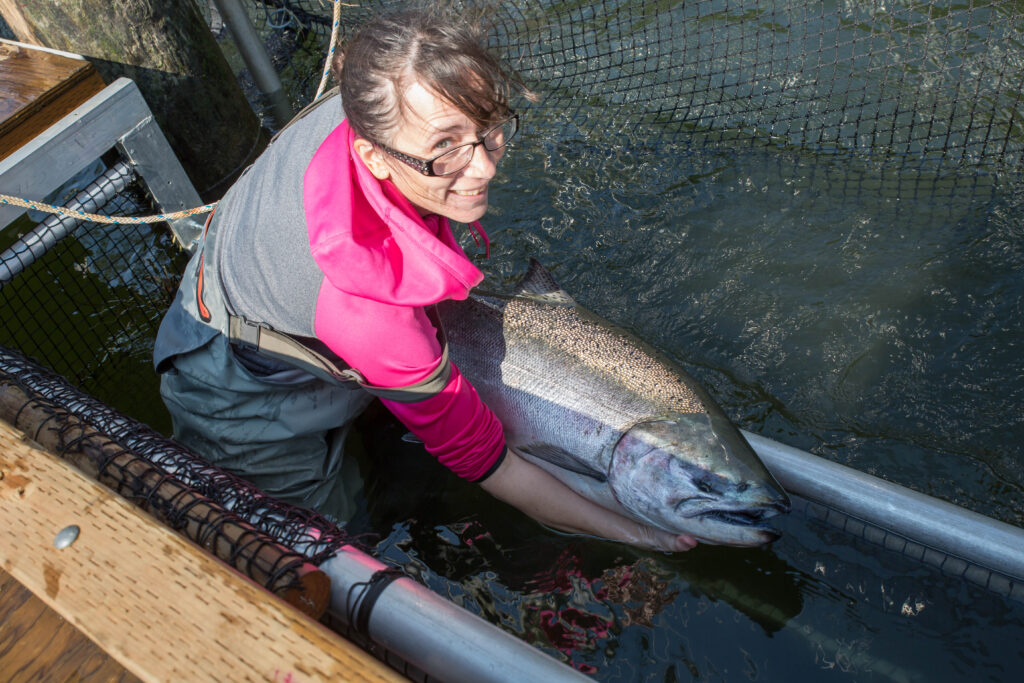
Figure 6. A wild Chinook Salmon is released by WFC volunteer Mary Valentine in 2017. Mary tragically passed away in 2024 and will be forever missed by all who had the opportunity to meet her.
Assuming the Washington Department of Fish and Wildlife maintains its course in advancing selective fisheries with fish traps and other alternative gears in the Columbia River, it is clear that the productivity and abundance of wild salmonid populations will benefit from bycatch mortality reduction and selective removal of hatchery fishes. Monitoring and research in the lower Columbia River will further be improved through use of low-impact fish traps, advancing the precision of management to promote sustainable fisheries and healthy wild fish populations. As wild salmon recover over time, it may become politically feasible to gradually reduce hatchery production and focus on management of sustainable wild salmon fisheries. Fishing effort could sustainably transition toward harvest of abundant, regenerative wild stocks that are properly managed to achieve biologically acceptable escapement targets. In this process, selective fisheries would continue to be necessary to protect the least productive stocks mixed within the fishery.
Although the potential benefits to wild salmon recovery from transitioning only the lower Columbia River’s relatively constrained non-tribal commercial fishery would have a somewhat limited effect regionally, a successful working model for selective commercial fishing could help drive a much broader transition toward the basic salmon management practice of harvesting in or near rivers of salmon origin with low-impact, passive fishing tools. Ultimately, returning to salmon management practices similar to those historically embraced by indigenous cultures will help to reduce mixed-stock overharvesting and bycatch mortality. As wild salmon recover from a decrease in harvest pressure, we may reduce societal dependency on hatchery production and allow for greater investment in management actions that do not degrade wild salmon productivity, such as habitat protection and restoration.
Stay Tuned through the Fish trap Journal
After three long years of waiting, the rules and permits have finally been completed to allow for the selective fish trap fishery to move ahead in the lower Columbia River in August 2025! As this historic occasion gets underway, Wild Fish Conservancy will once again be sharing in-season updates, data, photos, and video through The Fish Trap Journal. We look forward to keeping you posted and sharing more about one of Washington State’s most sustainable salmon fisheries and various opportunities to purchase sustainably-caught Coho Salmon and Chinook Salmon at a market near you. For the first time, consumers of our region can be assured that they are purchasing a product that is truly sustainable, wild salmon-safe, orca whale-safe, and ultimately beneficial to the recovery of ESA-listed wild salmon in the Columbia River.
